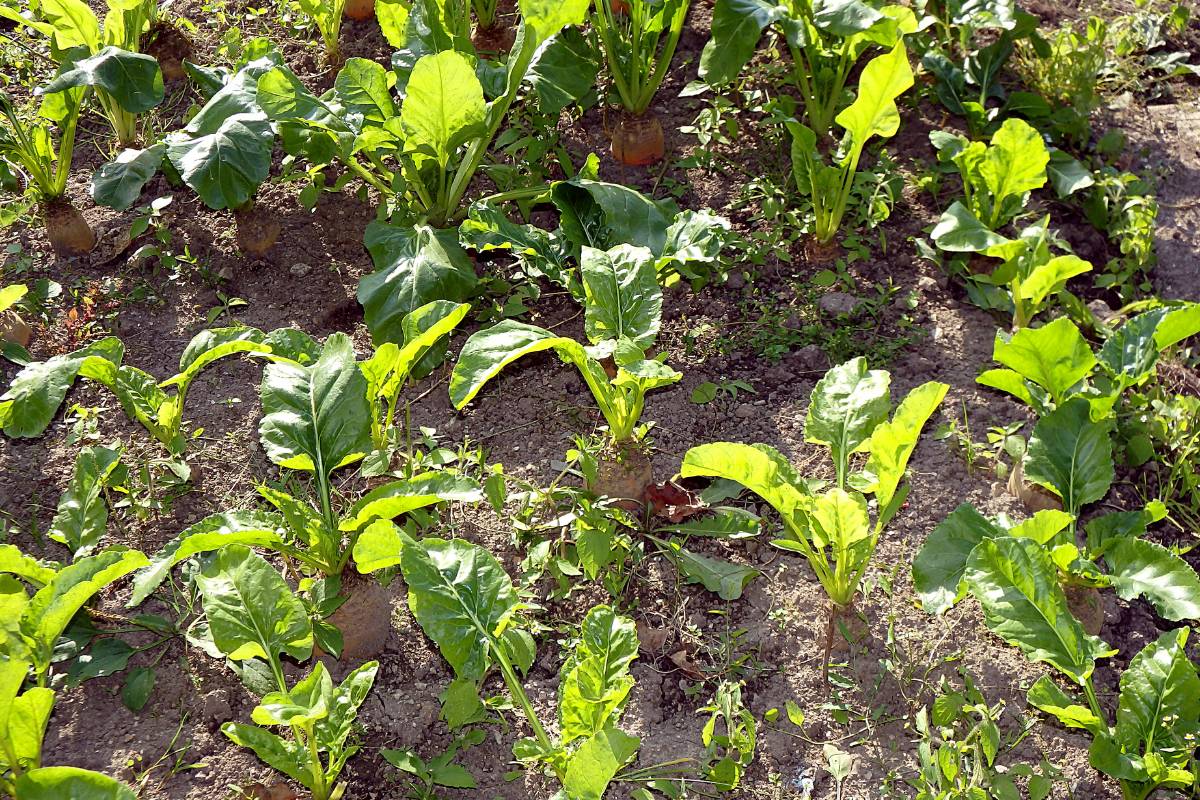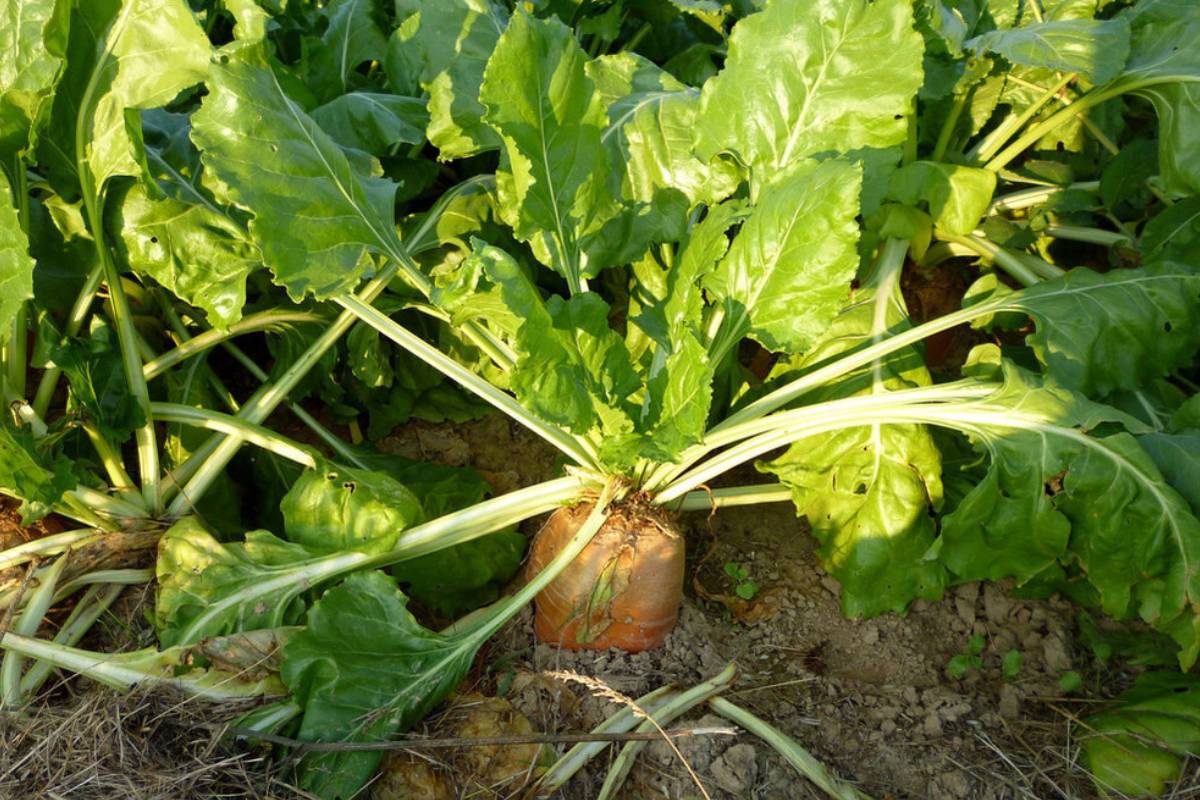Beetroot is famously loved by Australians, with barely a burger going that doesn't feature the purple-staining veggie. And while silverbeet isn't quite so widely admired, it's an essential ingredient in Greek and Middle Eastern cuisine and is highly valued as a versatile leafy green that packs a healthy punch.
Given the popularity of those two closely related veggies, it's perhaps surprising that another botanical sibling is often overlooked, particularly as it provides both edible roots and leaves in the same easy-to-grow plant.
Mangel wurzel is an heirloom variety of beet that belongs to the same Beta vulgaris species as beetroot, silverbeet and sugar beet. It has had several names over the years, including mangold, mangold wurzel, manglebeet, yellowbeet, and other variations on the theme.
An abundant grower, it was once known as the 'scarcity root' thanks to its ability to feed people when other veggies were thin on the ground. The same productivity meant it was highly valued as a fodder crop, providing both bulk and high sugar content to keep all kinds of livestock happy through the winter months.
Unfairly, this 'scarcity' label and the association with cattle means that mangel wurzel is often seen as unsophisticated and less valuable than its esteemed relatives. That's a shame, as when mangel wurzel is grown and harvested with care and then treated sympathetically in the kitchen, it's a versatile veggie that deserves a higher profile in supermarkets and restaurants, not to mention home gardens.
Mangel Wurzel in the Kitchen
Mangel wurzel is a dual-purpose veggie, providing large edible roots and copious amounts of edible green leaves. The greenery can be treated in much the same ways as silverbeet or spinach, making a great side dish when the young leaves are wilted in butter or chopped and added to stir-fries or soups.
The sweet, juicy roots are similar to a whitish-yellow beetroot when harvested young, although their eating quality drops off in older roots as they become progressively woodier with size. Use them raw and grated into salads, or steamed, boiled or baked, where they make a great alternative to potato in all its guises.
Beetroot is perhaps most widely eaten pickled, and the same treatment can be given to mangel wurzel bulbs, which is useful if the roots have grown a little larger and coarser than is ideal. But if pickling isn't your thing, the roots also store well in cool, dark conditions, providing a source of tasty meals for a couple of months or even longer.
And lastly, the root's high sugar content means it's a good candidate for turning into a unique wine or beer, either as the main ingredient or as an extra sweetener in your favourite homebrew recipe. The earliest known recipe for ‘Mangel Wurzel Ale’ dates from 1829 and involves peeling, slicing, boiling and mashing the root and combining the resulting liquid with hops and yeast in the usual way.
How to Grow Mangel Wurzel
Mangel wurzel cultivation is essentially the same as beetroot cultivation, requiring:
- A sunny position (within reason - see below).
- Well-draining, fertile soil, with good potassium levels in particular.
- Consistent watering, as drying out can cause split roots.
However, there are two important differences to bear in mind.
Firstly, mangel wurzel isn't heat tolerant and will need protection in climates with hot summers. If you can choose an area that sees morning sun but shade from midday onward, that's ideal. But if not, artificial shade such as cloth or heavy netting will be needed for the hotter parts of the day.
Secondly, the roots can grow much larger than beetroot, particularly in cooler climates, so spacing needs to be increased. In southern areas, the roots can reach up to 20kg in ideal conditions, and plants should be spaced at least 50cm each way. In more northerly parts, roots are more likely to reach only a few kilos if left to fully mature, so spacing of 30cm is more common.
Leaves can begin to be harvested when they are large enough to eat, removing just some of the outer leaves and leaving the inner ones to fuel the plant’s growth. Cut them with a clean, sharp knife just above the ground or the top of the swollen root.
The roots are best harvested on the younger side if they're intended for the kitchen, with the larger and woodier specimens better reserved as fodder. In either case, it's important to harvest before the weather turns cold, as even a light frost can turn the roots into a mushy mess.
Other than the spacing, temperature, and harvesting considerations, growing mangel wurzel is straightforward. If you keep on top of weeding and pest control and stick to a regular watering schedule, you'll be rewarded with a bountiful harvest of a veggie that's as delicious as it is unusual.








